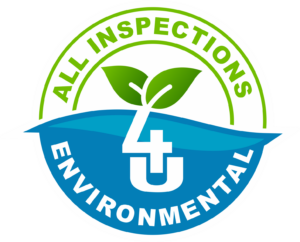Water Intrusion Investigations

AVAILABLE SERVICE IN MIAMI, BROWARD & PALM BEACH COUNTIES
● When it comes to water intrusion, we take care of the inspection, testing, and sampling services necessary to locate the sources of water intrusion into a building, or building components, be it liquid water from leaks, condensation from the infiltration of humid air, or water vapor diffusion.
What are water intrusion issues?
● Roof Leaks and Condensation: Water intrusion of this type usually results in water damaged ceiling tiles.
● Pipe Breaks: Determine the type of pipe and the location of the break. …
● Sewer Line Back-ups: Areas affected by a sewer line back-up need to have restricted occupancy until the problem is addressed and the area cleaned.
What is a moisture test?
● A moisture test measures the amount of water in the structure of a house, and it helps identify water damage within the framework of the house. Usually, wood for construction has a moisture content of 19 percent.
Moisture meters?
● These are used to measure the percentage of water in each substance. This information can be used to determine if the material is ready for use, unexpectedly wet or dry, or otherwise in need of further inspection.
What is water intrusion?
● To determine a good definition of water intrusion or what is meant by water intrusion, consider the two words separately.
● First consider the action portion or the term, “intrusion”. An intrusion is something that is done by an intruder. Someone (or something) who comes into your room, your house, or your place of business that is not supposed to be there. The intruder has broken in and made illegal or at least undesirable entry. They were not invited, and their presence is unwelcome.
● Second, the object doing the intruding in this case is water. Water that should have stayed outside the building has found a way to get into the building. Some examples of this type of issue include a roof leak or water coming into a basement. Or water that should have stayed contained has escaped into areas where it was not supposed to be. Some examples of this include plumbing leaks or appliance failures. Another way that unwanted, uncontrolled water can damage a building is through excess moisture vapor and condensation.
● Water intrusion, moisture intrusion, or water ingress is a serious concern. It can result in significant physical damage to buildings which requires expensive repair and remediation efforts. Additionally, the occupants of a building with a water intrusion problem can potentially experience various health problems. That is why it is important to understand, prevent, and/or identify and remediate water intrusion issues as soon as possible to eliminate or reduce the severity of these negative effects.
● We use qualitative, quantitative and experience to conduct our evaluations and provide a written report with pictures and proper recommendations to back up our findings.
● We use the latest in technology equipment to identify, to the extent of accessibility any issues in your property
● “In summary, we can say that water intrusion is the uncontrolled movement of water or water vapor into areas in a building where it is unwanted and undesirable.”
Moisture Intrusion
Moisture intrusion can be the cause of building defects, as well as health ailments for the building’s occupants. Inspectors should have at least a basic understanding of how moisture may enter a building, and where problem areas commonly occur.
Some common moisture-related problems include:
● Structural wood decay.
● High indoor humidity and resulting condensation.
● Expansive soil, which may crack the foundation through changes in volume, or softened soil, which may lose its ability to support an overlying structure.
● Undermined foundations.
● Metal corrosion.
● Ice dams; and
● Mold growth. Mold can only grow in the presence of high levels of moisture. People who suffer from the following conditions can be seriously (even fatally) harmed if exposed to elevated levels of airborne mold spores:
● Asthma.
● Allergies.
● Lung disease; and/or
● Compromised immune systems.
Note: People who do not suffer from these ailments may still be harmed by elevated levels of airborne mold spores.
How does moisture get into the house?
Moisture or water vapor moves into a house in the following ways:
● Air infiltration. Air movement accounts for more than 98% of all water vapor movement in building cavities. Air naturally moves from high-pressure areas to lower ones by the easiest path possible, such as a hole or crack in the building envelope.
● Moisture transfers through air currents extremely fast (in the range of several hundred cubic feet of air per minute).
● Replacement air infiltrates through the building envelope unless unintended air paths are carefully and permanently sealed by diffusion through building material.
● Most building materials slow moisture diffusion, to a large degree, although they never stop it completely.
● Leaks from the roof.
● Plumbing leaks.
● Flooding, which can be caused by seepage from runoff or rising groundwater; it may be seasonal or catastrophic.
● Lastly, human activities, including bathing, cooking, dishwashing and washing clothes. Indoor plants, too, may be a significant source of high levels of humidity.
Climate Zones
In the Northern U.S., moisture vapor problems are driven primarily by high indoor relative humidity levels, combined with low outdoor temperatures during the winter. In the southern U.S. (especially the southeast), the problem is largely driven by high outdoor humidity and low indoor temperatures during summer months. Mixed climates are exposed to both conditions and can experience both types of problems. Humid climates, in general, will be more of a problem than dry climates. Wind-driven rain is the main cause of leaks through the building envelope.
Inspectors can check for moisture intrusion in the following areas:
Roofs
A roof leak may lead to the growth of visible mold colonies in the attic that can grow unnoticed. Roof penetrations increase the likelihood of water leaks due to failed gaskets, sealants, and flashing. The number of roof penetrations may be reduced by a variety of technologies and strategies, including:
● Consolidation of vent stacks below the roof.
● Exhaust fan caps routed through walls instead of the roof.
● High-efficiency combustion appliances, which can be sidewall-vented.
● Electrically powered HVAC equipment and hot water heaters that do not require flue
● Adequate flashing. Oftentimes, inspectors discover missing, incorrectly installed, or corroded flashing pipes.
Plumbing
● Distribution pipes and plumbing fixtures can be the source of large amounts of moisture intrusion. If the wall is moist and/or discolored, then moisture damage is already in progress. Most plumbing is hidden in the walls, so serious problems can begin unnoticed.
● One of the most important means of moisture management in the bathroom is the exhaust fan. A non-functioning exhaust fan overloads the bathroom with damp air. If the exhaust fan does not turn on automatically when the bathroom is in use, consider recommending switching the wiring or switch. The lack of an exhaust fan should be called out in the inspection report. The fan should vent into the exterior, not into the attic.
● The bathroom sink is a common source of moisture intrusion and damage. Although overflow drains can prevent the spillage of water onto the floor, they can become corroded and allow water to enter the cabinet.
● Use a moisture meter to check for elevated moisture levels in the sub-floor around the toilet and tub.
● Bathroom windows need to perform properly in a wide range of humidity and temperature conditions. Check to see if there are any obvious breaks in the weatherstripping and seals. Are there stains or flaking on the painted surfaces?
● Check showers and bathtubs. Is the caulking cracked, stiff or loose in spots? Are there cracked tiles or missing grout that may channel water to vulnerable areas? If some water remains in the bathtub after draining, it may be a warning sign of possible structural weakening and settlement in the floor beneath the tub.
Utility Room
● The water heater tank should be clean and rust-free.
● The area around the water softener tank should be clean and dry.
● Check that all through-the-wall penetrations for fuel lines, ducts, and electrical systems of heating systems are well-sealed. All ducts should be clean and dust-free. Inspect the air supply registers in the house for dust accumulation.
● Filters, supply lines, exterior wall penetrations, vents, ductwork, and drainage of the cooling system must all be in good working order to avoid moisture problems.
Attic
● Look for stains or discolorations at all roof penetrations. Chimneys, plumbing vents and skylight wells are common places where moisture may pass through the roof. Any such locations must be inspected for wetness, a musty smell and/or visible signs of mold.
● Are there areas of the insulation that appear unusually thin?
● Rust or corrosion around recessed lights are signs of a potential electrical hazard.
Foundations
Model building codes typically require damp-proofing of foundation walls. The damp-proofing shall be applied from the top of the footing to the finished grade. Parging of foundation walls should be damp proofed in one of the following ways:
● Bituminous coating.
● 3 pounds per square yard of acrylic modified cement.
● 1/8-inch coat of surface-bonding cement; or
● Any material permitted for waterproofing.
In summary, moisture can enter a building in several different ways. High levels of moisture can cause building defects and health ailments.
To schedule an inspection, call (954) 802-8524
Call (954) 802-8524
SCHEDULE AN INSPECTION TODAY


